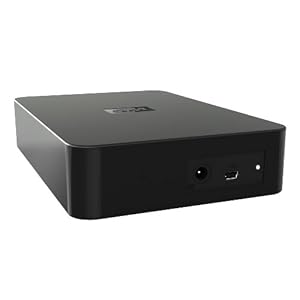How to Save Your Old Hard Drive
So you've ultimately decided to turn that old piece of electronics with a flaming new Pc. But, when you think about it, maybe not all of the old stuff is to throw away indiscriminately -- hard drive technology, in particular, doesn't improve as fast as microprocessors technology, and even if that old hard disk can't store that much, you're mental that, after all, maybe you could still use it as a backup unit. Here are a few tips on how to make that happen.
How to Save Your Old Hard Drive

How to Save Your Old Hard Drive
How to Save Your Old Hard Drive
How to Save Your Old Hard Drive
The first ask that comes to mind is: why don't I just plug it in? Unfortunately, your hard disk won't work right away like this, unless it's the only unit instalLED. If this is not the case, you will have to turn a few setups in order for this to work properly.
With the Pc turned off, plug in the old hard drive, then enter the boot setup Screen -- the procedure to do that depends on the singular hardware you're using, just look at the very early messages the Screen displays when booting up.
After pressing the right button, you should have entered the boot setup Screen: find the 'devices' Screen. In a typical configuration, you'd want to set the new, bigger hard drive as 'master' and the old, recycLED one as 'slave'. This means that the bigger hard disk should be the one containing the operating system and whose Mbr (Master Boot Record, bootup information) will be used, while the second hard drive won't need to have an operating system installed, and can be used to just store your data. Exit the boot screen and, when prompted, save the changes you have made.
Just as a precaution, it's probably a good institution to tweak the boot gadget order too. When you exit the boot setup screen, your Pc will be restarted. Check again for early messages on the screen, but look for the boot gadget order button this time. When you press it, you will be shown a page with a list of the hardware from which you can boot up your Pc. Just make sure the new hard drive is the first in the list (and, if possible, delete the old hard drive from the list as well). Attention: devices in this list won't typically be assigned approved Windows identifiers such as 'C:' or 'D:', but rather with their model, so it's a good idea to double check the brand of the two hard drives before doing this.
At this point, all should be ready to start. Depending on your singular situation, you can whether lope to installing the operating system of your choice, or just keep using it with the benefits of a backup unit. If anyone went wrong, don't panic: you can roll back the changes by logging again into the boot screen, just like you did before.
Finally, it's a good idea to format your backup hard drive before starting to use it. Now that you have an old/new hard drive at your disposal, remember -- especially if one of them is an external Usb drive -- to always unmount it before removing the cable connecting it to the mainboard, or you could risk experiencing serious data loss.
How to Save Your Old Hard DriveRelated : Buy Shopping Discount OmniMount ECSB Component Shelf Puma Powercat 5.10 Football Backpack

No comments:
Post a Comment